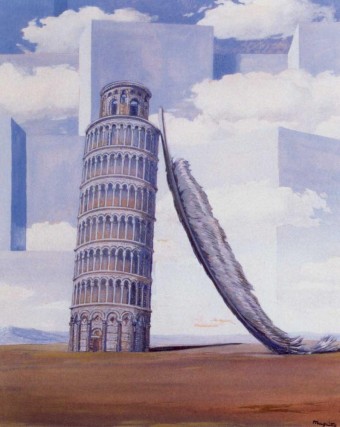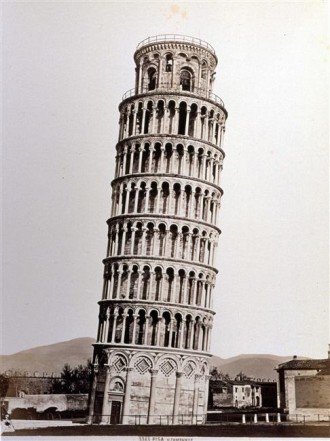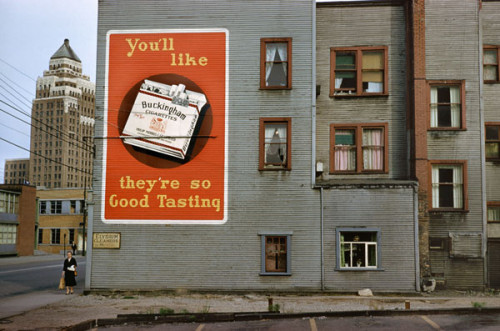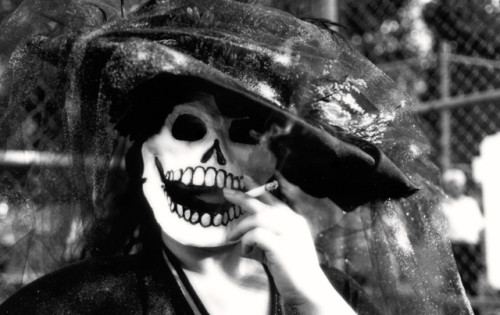“The capability to overkill and to overburn, and the mental
behavior that goes with it are by-products of the development
of the productive forces within a system of exploitation
and repression; they seem to become more productive
the more comfortable the system becomes to its privileged
subjects.”
Herbert Marcuse
“It is not impermanence that makes us suffer. What makes us suffer is wanting things to be permanent when they are not.”
Thich Nhat Hanh
“It is precisely this fear of education as a building block for both critically engaged youth and a broader public and for a radical politics that inspires a great deal of fear in the billionaire, anti-public (un)reformers.”
Henry Giroux
“With neoliberal deterritorialization, no new production of subjectivity takes place. On the other hand, neoliberalism has destroyed previous social relations and their forms of subjectivation.”
Maurizio Lazzarato
Someone once said to me, when I was still very young, that if you believed the exact opposite of both what the government and media said, and what is socially accepted as received wisdom, that you would be far closer to the truth. He said, whatever passes for *common sense* is almost always wrong, and in fact it is exactly the opposite of the truth.
I also remember the one evening I spent with William Burroughs, when I was also still pretty young. The one comment I remember from him was;
“When in doubt, always look for the most banal explanation, it will be closer to fact”.
What has struck me recently is how easily, and gratefully, the American bourgeoisie will choose the fascist alternative. They will choose the authoritarian, the punitive, and the cruel. There is also a growing resentment in the U.S. public having to do with the ‘other’. This is the rising Orientalism in media, for one thing, but its also a return, in starker terms, of that latent Puritanism and institutional spiritual intolerance that founded the country.

Giacomo Brogi, photography. “Chiasa della Trinita de Monti”. Rome. 1870.
Before returning to this, I wanted to digress a little and discuss an idea I raised last posting. The idea of history receding to the point where it effectively has ceased to exist. The above photograph is by Giocomo Brogi, whose work was very popular in 19th century and early 20th century post cards. His work was important to Freud (and I use Mary Bergstein’s very fine book Mirrors of Memory; Freud, Photography and the History of Art for some of this). I was particularly struck by this photograph. There is something in that central figure on the steps, the man in black, walking toward the photographer. One wants to ask who was he? What day was this? Where was he going? And to the 21st century eye, the streets of Rome seem quite empty. In many of Brogi’s photos there is a Di Chirico like quality, a sense of something not being quite right. Now in some of the shots used for post cards there is also an assumption that a bit of touching up had gone on, but that’s not likely the case with this photo. The viewer is haunted, literally, by the all the questions imposed by this image. This is Benjamin’s ‘optical unconscious’. It is also the uncanny, and this is a good part of what Bergstein writes about in her book.

Rene Magritte
Now, Barthes suggested that the optical unconscious was built up of material and detail unintentionally included in every photograph. But when Bergstein writes that the zoom feature or other enhancing techniques makes this even more pronounced today, I think she is wrong. The material that is unintentionally included is not available through any technical feature. I suspect this was what nagged at Antonioni when he made Blow Up. It’s there, but it’s not there. For Freud, the photographs of ancient ruins, or statues, or archaeological sites was a distilled experience of the passing of time. Or rather, it was a reminder of history, and all that implied. Now, Freud wrote of an experience he had in 1907, in Rome, where a canvas screen was hung from a rooftop and various slides (diapositives) were projected. The images were varied, intentionally, and included many advertisements of the time. The common wisdom here has been to compare the unconscious (Freudian) with a screen. A sort of interior spatial structure on which memories are played as if in a movie. But I think it is wrong to suggest *screen* as if there is only one kind of screen. Today, the experience of sitting before a lap top is very different in it’s effects from, say, looking through a ‘View Master’ or other stereoscopic instruments from fifty years or a hundred years ago. And here it is useful to remember that Freud’s time was also one of microscopes, X-Rays, and other new technologies of the optical. It marked the transformation of the very idea of ‘detail’. The growth of the detective novel coincided (more or less) with this new world of normally unnoticed detail, or clues. The dream state of antiquity, therefore, probably was very different. And this is perhaps one of the reasons why psychoanalysis applied to pre modern characters is usually so unsatisfactory.

Giocomo Brogi, photography. “Tower of Pisa”, apprx. 1870s.
The development of medicine paralleled this psychic shift, as a world of microbes and sub-optical causes was being unearthed much as a police detective discovers clues. But the detective finds clues to a *crime*. And this seems important to me. But it also signaled a shift in how space was constructed mentally. It also established a sub-text of criminalized disease. In a sense, as has been noted before, there is a great similarity between Freud and Sherlock Holmes. And the durability of Holmes as a fictional character is probably not an accident. The connoisseur of difference and detail was born. And no doubt something related to reason as an actual idea was lost in this transformation (more on that below). The excavation of memory that is partly the goal of psychoanalysis involves a host of metaphors, and most of them relate to space. As telescopes (per Bergstein) bring distant objects near, the new images of photography were like telescopes into the past, and of course the light of distant suns are in a sense a making close something that is very remote in terms of linear time. The world of new details were also linked to memory in another way, that of what is forgotten. And here it is worth mentioning the effects today of automobiles (and trains, and even in modified ways by planes) where the landscape passes framed by the window.

Justin Fantl, photography. “Death Valley, CA.”.
Today, the technological assistance imposed on nearly everyone, in varying degrees, shape and inform the way people talk and hear, and most significantly, how they see. Social subjection and machinic enslavement, as Lazzarato puts it. And together, looked at in this way, there is a production of subjectivity that is increasingly barren and superficial. Even in the partly radicalized individual, too often I sense this denuded human, an ahistorical organism of basic reflex and almost empty of contemplative imagination. The theories of Guattari, and to a lesser degree Foucault, were largely looking at this idea of the manufacturing of subjectivity. In another sense, however, returning to Freud, and specifically to his dream analysis, something of a more acute sense of history emerges. Psychoanalysis is a theory of history. It is through this theory of history that the analysand is to arrive at some kind of self awareness. The nature of that self awareness is important to examine, but first it is important to revisit exactly what Freud was saying about history. The analysis of dreams was a way to understand the past. First, of course, one had to understand the dream. Or maybe that’s *understand* the dream. The process for analysing dreams first posits, or works from, a spatial model. And it is, I think, hugely important in understanding both aesthetics and contemporary life. Or the destruction of life.

Tatiana Trouve
Freud may have wanted to see himself as a scientist, but he was only such in a very limited and narrow sense. Charcot told him to look at things over and over until they opened themselves, or spoke. This mimicked the scientific process. But in fact for Freud there was always, at bottom, an interior landscape made up of relations between signs and symbols, and fragments of narrative, a poetics of space. In this ‘space’ there emerges associations. And it is exactly this; the process of generating associations on which psychoanalysis rests. Freud thought all things had meaning, and that nothing was accidental or coincidence. In fact, he thought all things had multiple meanings. This starts to approach both religion and philosophy, but it also suggests that the mediation today of daily life by a societal system of domination is predicated on disrupting association making, or more, simply quarantining inner life from the self; in other words making the self the sum of exterior behaviors. The idea that we ‘create’ our world is an alibi to avoid saying everything is accidental and nothing has meaning, which mass culture refuses to even discuss as a topic. And when the cynic says, as contrarian, ‘nothing has meaning’, this is a positing of the idea that the passing events of daily life are simply arbitrary. Arbitrary has the sound of the no-nonsense man, while meaningless feels weak and perhaps even feminine.
The hostility today to Freud (less to psychology and therapy) has to do with the fact that a society of control is compelled to deny forces at work that cannot be seen, or often understood. Freud saw society as sick, and hence dreams as a symptom. The illness caused pain, usually acute and debilitating psychic pain. Dreams are made up of things from the material world. The association making process is based on recovering forgotten meanings, or peeling back historical obfuscation. In dreams the details matter, they confer meaning, or reveal clues. And clues are there to help solve mysteries. Except that for Freud the mystery never quite goes away, and that is a part of the pain. The part that can never be resolved. And that resolution itself, the idea of resolution, is connected to the forces of destruction. And to the death instinct. More important however is the historical weight applied to all analysis of dream work. Nothing is universal. Freud is accused, often, of the opposite. But its an error in the reading of his work, for all that is universal is that meaning must be historically situated, or rather interpretation must be. In the end, the pathology is never completely removed. The associations are also always magical. This is the irrational Adorno saw in the heart of the societally manufactured individual. Fascism, the forces of subjugation, are deposits of cruelty sedimented in the psyche. And some of that is long forgotten consciously, but it is also forgotten collectively, or culturally. And if not forgotten, it is repressed. And what is the difference?

Lynne Cohen, photography.
The meaning of dreams has to do with the uncovering of the wish embedded as the driving force of dream narrative. Without going into too much detail here, the question raised, really, is what do mean by *wish*? In terms of aesthetics, the wish is there in how the viewer mimetically engages with the artwork. All paintings and photographs — even abstract or medieval or prehistoric are mimetically powerful by virtue of an element that interrupts, or shocks the mimetic narrative that is being carried out silently in our head. Something strange, uncanny, or something that is a reminder of our own past. It is a small surprise. There are some photos by Fred Herzog, of Vancouver in the 1950s, that I find painfully haunting and this is because I can remember that world. That was my childhood, except in Los Angeles, and sometimes it is easy enough to identify what triggers this melancholy; an old wooden house, or the clothes worn by down at the heels men as they walk dejectedly on the sidewalks. Other times it is not at all clear, it is a feeling, a ghost emotion, a sense of some pull, something I should but cannot remember. For me that childhood world is associated with sickness, humiliation, and loneliness. I suspect almost everyone’s memories are melancholy, and for those who say otherwise, well, they probably are the ones who discount Freud, too. Ronald Reagan believed he had a wonderful idyllic childhood. Or that’s what he felt he had to say. But I believe him. I believe he believed that, even though we know his father was an alcoholic. In the paintings of, say, Velasquez, or Watteau, I find certain things that ‘feel’ personal. I don’t know why. I feel less personal relationship to Degas say, or Rubens. I can admire, but not feel pulled. Still, this changes over time. For the individual changes, as society changes. Guattari is correct, I think, when he emphasizes the language of imperialism, the grammar, the semiotic rules that produce a capitalist subjectivity, also produce a hardening of sensitivity to the aesthetics of life. Of course how is it that such grammar has evolved? In another sense, this is the overlap of politics, economics, and aesthetics. Lenin’s ideas on the creation of tools — politically — to shape organizational projects, are possibly the model, or *a* model for intellectual or cultural reorginzation. But first, organize the dreamwork. There is a vague implication of something like this in Lazzarato, but more, it is there in Deleuze and Guattari, too. The problem has been that somehow the intellectual thrust of the 1960s and the two decades following, ended in Zizek. And Zizek is the 400 pound gorilla on the living room sofa. It seems very few intellectuals want to openly admit that he is a farce, a reactionary who is not even a good magazine level thinker.

Egypt, 2130 B.C.E. Old Kingdom.
The institutional structure has become another Imperialism. And the permanent state of schooling a form of erasing dreams. Cultural institutions now appropriate stories from the poor, worldwide, maintain exclusionary practices domestically, and seem to validate only based on market values. But, to return to dreams. Freud in The Interpretation of Dreams was positing a system of perception outside our conscious selves It is a system in which, as I said, material from daily life and history is stored for easy access later to the conscious mind. The third system is the one that has no access code. It is the secret self, the hidden self. But it is also, as Freud alluded to a number of times over the years, the truest part of ourselves. More, it is the true reality. However, there is another part of this psychic structure, and that is censorship.
“We may therefore suppose that dreams are given their shape in individual human beings by the operation of two psychical forces (or we may describe them as currents or systems); and that one of these forces constructs the wish which is expressed by the dream while the other exercises a censorship upon this dream wish and, by the use of censorship, forcibly brings about a distortion in the expression of the wish.”
Sigmund Freud
The nature of the Freudian unconscious is a topic to which an entire library could be devoted. But one thing is clear, in psychoanalytic terms, and that is that censorship is dialectical. Low value symbols replace ones with too high an intensity, only to later, via condensation, to see those tolerated symbols acquire problematic intensity. Everything is subterfuge and everything is a mask. The associations overlap as well, threads of associations jump the tracks. They become part of a new repressed narrative. But as Jose Brunner points out;
“For Freud the transformation of an expression from one mode to another was never simply a matter of translation, transcription, or transfiguration. It always involves antagonistic forces in conflict with one another and leads to a double edged result.”It is safe to say, I think, that Freud saw the political world operating in the exact way that dreamwork did. He even frequently used political metaphors. There was always potential revolution in the psyche. The censoring apparatus is not to be seen crudely as a little man in a government office blacking out forbidden words. The censoring apparatus is fluid, and in the end mysterious. The only certainty, for Freud anyway, was that everyone wears not just one mask, but several. There is a quality of Kafka in Freud’s similes and metaphors. It has always struck me that the large empty halls, the drawing rooms and the various guards one finds in Freudian examples are the stuff of Kafka’s writings. The spatial model of Kafka’s Castle is one remarked upon by Lacan and Benjamin both. Segregation is therefore an immutable quality of Freud’s mental system. There is a dialectical interchange between society and our unconscious. Between our unconscious and the world men have created.

Laurent Grasso
As Brunner put it “…the psyche’s aboriginal population of infantile impulses is banned into the depth of the unconscious, where it remains separated from the subject’s consciousness by an internal police force.” The psyche is almost colonial in the Freudian model, and I think this is often terribly misread. The space of the psyche is interrogated in art. Theatre is perhaps the most obvious medium, but all the qualities of the uncanny, all the emotional tugs that certain rooms, or valleys or empty halls give us are somehow reflecting an unconscious topography. That this topography is historical is obvious, and pivotal. It is at this point exactly where Jung goes awry. Woman and men are born into worlds already with histories, but those histories have been created, and evolve, and this is the dialectics of the unconscious. And, the Oedipal structure is one in which the super ego bases itself. The Father helps form the controller of boundaries. The inner cop. The sense of guilt, or suspicion is the trace element of this formation. All stories are crime stories. There is always a primal crime. Today, as the U.S. leads the western world toward a new global police state, the triumph of the inner cop may well be the consequence of the forces of Capitalism, the psychic legacy of a society bent on on destroying memory and inner life. If one cannot access even the censoring apparatus properly, and if imposed on this attempt are greater and greater penalties in the material world, then those interior mental spaces close their doors, and so to speak, throw away the key. The agencies of authority for the state are now disproportionate to the psychic agencies of authority, or repression. Everything is subterfuge, everyone wears a mask, and nothing is what it seems. This is the basis of all storytelling. But the storytelling has stopped. What happens when it is stopped in the material world? The shriveling of the mimetic can only result in flight into authority — any authority, any father, and the current adoration of the violent warrior cop, or killers in uniform, feels like the lonely exile seeking the last approval on offer.

Fred Herzog, photography. Vancouver, apprx. 1957
The topography Freud detailed increasingly took on qualities of the theatre. It became more Shakespearean in fact. The mind’s stage is where the narrative begins, and is acted out. The stuff of this play is found in the material world. Even the dialogue. The off-stage is being cemented over, the exits shut and locked. The compulsive repetitive expressions of violence and cruelty are all that is left. There are, of course, a number of secondary aspects to this sort of reductive model. One is the effects of, today and for the last century anyway, photography and film. But also mechanical travel. The film became identified with as similar, perhaps, to the constant passing images and symbols of the unconscious. The cunning unconscious. The primal crime was now being investigated. Clues were found, clues were disguised, and the temporality of cinema increasingly became the default setting for self evaluation. Everyone lives in a movie today. It is interesting that this cannot be said, ever, of theatre. And really not of photography. It was in moving pictures that dream work found its double. The Private Detective always solves the crime, and hence we are always guilty, even if we didn’t do it, and we never do it.

Ed Valfre, photography. DIa de los Muertos.
An added note on Clint Eastwood’s new film American Sniper. It may be the most psychotic piece of American filmmaking ever. I think that in years to come when looking back at Eastwood’s career, this is going to seem the logical conclusion to his madness. All the lurking sadism, the misogyny, the jingoism has reached completion. All the personal issues that were always half hidden, the abuse of wives and girlfriends that was hinted at, the strange perverse relationship to animals and children, all of it is now unveiled, unmediated, stark naked insanity. Its an ugly experience. It is soul deadening and I had a hard time washing it out of my head. From the almost murder of a dog to the murder of a child, and a mother, and later an an almost second child murder. To the curious and total lack of context for the story. Bradley Cooper has always been a limited actor, a sort of beefy not very intelligent presence that in one way is perfect casting for this. At least in terms of what Eastwood is doing. For Eastwood questions nothing about this narrative. Nothing. It is as if this were the political world view of the WWF crossed out with Oliver North. There is no moral complexity, there is only a shocking hatred for Muslims, a cartoon U.S. military machine, and even that cartoon lacks depth. It is a truly depraved film. It has all the value of a snuff film. Its really the zenith of white supremacism and disregard for the lives of all others. The end of the film, after 120 some minutes of this shit, the end of Chris Kyle arrives. But Eastwood shows it off screen. Why? Presumably because it is, for him, a sacred moment. Too hard to film. How can we do justice to such a horror. Sniper head shots of children …well, thats OK. Showing the ‘War God Kyle’ meeting his banal but rather karmic end at the hand of another psycho vet is sacrosanct. As a footnote of sorts, the real Chris Kyle was a racist sadistic killer who enjoyed death. He was a not very smart and very unpleasant man, exactly the sort of figure Eastwood lusts for. The erotic sub text to this film is as unwholesome as is the rest of it. It resides within a camera that is forever seeking out the manliness of Cooper’s ‘Kyle’. Rarely has such fetishizing of the male body been filmed as if a dirty secret. There is no nudity, little skin really, there is only a constant nervous camera that wants more of Cooper, that seems more alive after killing. The accumulative affect is a bit like watching someone’s unspoken lusting for a nun. Or a killer nurse. I am struggling with exactly what simile might be most appropriate. Eastwood is shooting a lot of this film as if he were channeling John Ford. Cooper is framed over and over as Ford framed John Wayne. Excpet Cooper is not Wayne. Cooper is the fifth generation dupe of Wayne. But his faux epic framing serves only to underscore all that is actually missing in this narrative. The constant return to these straight on shots of Cooper are very odd. Cooper is looking past the cinematographer, he is looking back at Eastwood. It is awkward. It is sexually ambivalent. And it is finally, flaccid. The erection is found only in the gun, the ejactulation is the exploding head, or the hole in someone’s chest. One hopes Eastwood stops now. Enough. For I don’t want to contemplate what might follow.

Chris Kyle funeral, Texas Stadium, Dallas, 2013.
But this is a film with uniformally good, if not great, reviews. The liberal (sic) Hollywood press cant line up their praise quickly enough. The bourgeoisie wants to love the Chris Kyle’s of the world. They want what Kyle wanted. If American Sniper wins best film I would not be surprised. It will certainly continue to be lavished with praise. And its useful to remember this is an acutely racist film. An Orientalist film, and the few Arabs with actual speaking parts are treated much like Eastwood treats the animals and women in the film.

Presuming for a moment that a particular war is “just”, perhaps psychopaths provide a useful purpose for the just side in undertaking the most awful human endeavor – killing other people. Lacking a conscience, they kill bravely (biologically being less inclined to fear), effectively and efficiently, requiring fewer soldiers with a conscience to be killed or permanently scarred by trauma, PTSD, etc. Perhaps the sociopath, like the worker bee, owes its existence to a certain evolutionary group necessity. Not a nice way for the grand architect to design humanity, but we had no input. It seems we weren’t wired to fight only just wars, either.
Great post. The idea of conscious technological experiences shaping our unconscious is not given enough critical thought today. I know you’ve written before about the screen’s stultification of our imagination, and it’s a disturbing question. I think, with *American Sniper* and with a lot of blockbuster cinema, we’re seeing the perversion of the oedipal narrative: the triumph of the paternal, a fantasy of domination and oblivion. You see it in e.g. Nolan’s batman: the reassertion of the primacy of the father. But this, I think, antedates our use of the screen, or the disappearance of creative living (or maybe it’s the other way around) — Winnicott locates it in an early (infantile) breakdown of symbolic thinking, an inability to use objects creatively: we then inflate the primal symbol of the father, rendered in concrete, only to be crushed by it.
Great, I have some other things to say but here are some things brought to mind:
Franco Moretti:
“A good rule in detective fiction is to have only one criminal. This is not because guilt isolates, but, on the contrary, because isolation breeds guilt. The criminal adheres to others only instrumentally: for him association is merely the expedient that allows him to attain his own interests. The metaphysics of the ‘social pact’ become his own and he takes it for what it is: pure form, a continuous pretence, which is not difficult to enact, because detective fiction is crowded with stereotypes. The difference between innocence and guilt returns as the opposition between stereotype and individual. Innocence is conformity; individuality, guilt. It is, in fact, something irreducibly personal that betrays the individual; traces, signs that only he could have left behind. The perfect crime – the nightmare of detective fiction – is the featureless, deindividualized crime that anyone could have committed because at this point everyone is the same. Such is the case in Robbe-Grillet’s Erasers, where everyone has the same pistol, the same clothes, the same words: at the end, it is the detective who commits the crime. Detective fiction, however, exists expressly to dispel the doubt that guilt might be impersonal, and therefore collective and social.”
—-
And this is from Carlo Ginzburg, writing about Freud, Morelli and Sherlock Holmes: Giovanni Morelli was a late 19th century art critic whose ‘Morelli Method’ was a practise of attributing old masters based not on the most striking elements of a work like the composition, themes, faces, but on these ‘minor’ and kind of unseemly details like the manner of depicting ears and fingernails. Ginzburg argued Freud was influenced by Morelli and he makes a case about Holmes and Freud at the same time:
“Museums, Morelli said, are full of wrongly attributed paintings – indeed assigning them correctly is often very difficult, since often they are unsigned, or painted over, or in poor repair. So distinguishing copies from originals (though essential) is very hard. To do it, said Morelli, one should refrain from the usual concentration on the most obvious characteristics of the paintings, for these could most easily be imitated – Perugino’s central figures with eyes characteristically raised to heaven, or the smile of Leonardo’s women, to take a couple of examples. Instead one should concentrate on minor details, especially those least significant in the style typical of the painter’s own school: earlobes, fingernails, shapes of fingers and toes. So Morelli identified the ear (or whatever) peculiar to such masters as Botticelli and Cosmè Tura, such as would be found in originals but not in copies. Then, using this method, he made dozens of new attributions in some of the principal galleries of Europe. Some of them were sensational: the gallery in Dresden held a painting of a recumbent Venus believed to be a copy by Sassoferrato of a lost work by Titian, but Morelli identified it as one of the very few works definitely attributable to Giorgione.
[…]
Enrico Castlenuovo…drew a parallel between Morelli’s methods of classification and those attributed by Arthur Conan Doyle only a few years later to his fictional character Sherlock Holmes. The art connoisseur and the detective may well be compared, each discovering, from clues unnoticed by others, the author in one case of a crime, in the other of a painting. Examples of Sherlock Holmes’ skill at interpreting footprints, cigarette ash, and so on are countless and well known. But let us look at “The Cardboard Box” (1892) for an illustration of Castelnuovo’s point: here Holmes is as it were “morellizing.” The case starts with the arrival of two severed ears in a parcel to an innocent old lady. Here is the expert at work:
[innterquote][Holmes] was staring with singular intentness at the lady’s profile. Surprise and satisfaction were both for an instant to be read upon his eager face, though when she glanced round to find out the cause of his silence he had become as demure as ever. I [Watson] stared hard myself at her flat grizzled hair, her trim cap, her little gilt earrings, her placid features, but I could see nothing which would account for my companion’s evident excitement. [/innterquote]
Later on, Holmes explains to Watson (and to the reader) the lightening course of his thoughts:
[innerquote]And as a medical man, you are aware Watson, that there is no part of the human body which varies so much as the human ear. Each ear is as a rule quite distinctive, and differs from all other ones. In last year’s Anthropological Journal you will find two short monographs from my pen upon the subject. I had therefore examined the ears in the box with the eyes of an expert, and had carefully noted their anatomical peculiarities. Imagine my surprise, then, when on looking at Miss Cushing, I perceived that her ear corresponded exactly with the female ear which I had just inspected. The matter was entirely beyond coincidence. There was the same shortening of the pinna, the same broad curve of the upper lobe, the same convolution of the inner cartilage. In all essentials it was the same ear.
Of course I at once saw the enormous importance of the observation. It was evident that the victim was a blood relation, and probably a very close one…[/innerquote]
[…]
“The Moses of Michelangelo” was first published anonymously. Freud acknowledged it only when he included it in his collected works. Some have supposed that Morelli’s taste for concealing his authorship behind pseudonyms somehow also affected Freud: and several more or less plausible attempts have been made to explain the coincidence…In any case, there is no doubt that under the cloak of anonymity Freud declared, explicitly but also in a sense covertly, the considerable influence that Morelli had exercised on him long before his discovery of psychoanalysis…To confine this influence to “The Moses of Michelangelo” essay alone, as some have done, or even just to the essays connected with art history improperly reduces the significance of Freud’s own comment, “It seems to me that his method of enquiry is closely related to the technique of psychoanalysis.” In fact the passage quoted above assures Giovanni Morelli of a special place in the history of psychoanalysis. We are dealing here with a documented connection, not merely a conjectured one as in many of the claims of “antecedents” or “precursors” of Freud; moreover, as we have said, Freud came across Morelli’s writings before his work on psychoanalysis. Here we have an element which contributed directly to the crystallization of psychoanalysis, and not (as with the passage of the dream of J. Popper “Lynkeus” which was inserted in later editions of The Interpretation of Dreams) just a coincidence noted later on, after his discoveries.”
(Carlo Ginzburg, Morelli, Freud, and Sherlock Holmes: Clues and Scientific Method
John: ?As Brunner put it “…the psyche’s aboriginal population of infantile impulses is banned into the depth of the unconscious, where it remains separated from the subject’s consciousness by an internal police force.” The psyche is almost colonial in the Freudian model, and I think this is often terribly misread. ”
The Freudian psyche is indeed the Austro Hungarian empire! And ever Viennese gentleman, loyal to the Emperor, has a savage Slovene inside him rattling the cage and determined to get out.
In 1933 Freud wrote, “Our best hope for the future is that intellect – the scientific spirit, reason – may in process of time establish a dictatorship in the mental life of man.” The attraction of dictatorship as a solution to the unfortunate fact of selfish egoist brutish individualist human nature, that Homo homini lupus, appeared not only for self government within individuals. Freud hoped that a resulting “community of men who had subordinated their instinctual life to the dictatorship of reason” would constitute a ruling class fit to complete the civilising mission; these patriarchs, formed by the internal dictatorship of intellect over instinct for the exercise of the same benevolent dictatorship externally, would possess the ideal virtues of liberalism. Having each individually with the higher psyche subdued and conquered the individual primitive beast of human essence within, they would form an “upper stratum of men with independent minds, not open to intimidation and eager in the pursuit of truth, whose business it would be to give direction to the dependent masses.”
While he does argue that this is literally human nature — that the newborn infant is literally driven by selfish antagonistic individualist and possess/acquisitive impulses, full of competition and desire for exclusive property, all of which has to be repressed for any social development to occur — he also seemed to see the imperial order as a forming a similar dynamic system
“All stories are crime stories. There is always a primal crime. ”
So how about the uncanny here as the trace of the one crime bourgeois culture is never allowed to solve (the crime of capital). The uncanny is tied to commodification of labour and mass production of consumer commodities; the Zombie in Haiti, the “living” coffee pot in France are coeval. So the Uncanny may be less a sign of mystery than of taboo.
First, @oisen and neil…..thanks for those comments. And oisen, I agree the return of the kitsch Oedipal seems to have traction in Hollywood now and that is maybe worth a longer discussion.
@molly: this is such rich material and somehow sort of relevant this week. I want to work backwards a little. I was thinking of course a lot about the uncanny while writing this. I want to get into that again in the next post. I think this is where overdetermination enters the topography. I like the idea of the crime of capital remaining unsolved and expressed as the uncanny, or a trace element that is a contributing factor to the appearance of the uncanny. But sticking to narrative for a second: Freud was clearly conflicted about this idea of the social mirroring the structure or topography of the psyche,. One enters into endless chicken/egg questions. He was a Jew who felt mostly a certain paranoia about the ruling class, at the same time that he had internalized this idea of a civilizing mission. But you make a leap that this dictatorship of reason would form a ruling class…..but he says nothing about that, as such. He sees, as did everyone in that era, a climb out of barbarism and violence and scapegoating (!) through this idea of reason….the inner cop would find expression socially in everyone sort of self regulating their instincts and desires. Lacan was sort of good on this. I mean he rightly sensed the ambivalence in any process that meant transferring the psychic economy out into the world. Because self regulation became social regulation. But as you quoted, Freud did see the masses as always susceptible to manipulation because of the tensions of the unconscious. One thing worth noting, and lots of Freud scholars have written about this, and that is what is the ‘nature’ of the unconscious? And most see Freud suggesting its cunning above all else. That the unc. was cunning and clever and itself manipulative. It was not just this roiling mass of crude primitive impulses. Now that Moretti quote is really great, although I dont agree with the second half of it. The crime is not ever solved. You can catch the killer, but that provides no satisfaction, for the detective is never just chasing the perpetrator. The guilt is always ours. The innocence is always suspect. I think one of the things you see in Sherlock Holmes, and later through all pulp stuff is that there is a cloud hanging over all innocence. Im writing a post now on Inherent Vice…and in a way, this is the theme of that film. Guilt, sure, everyone is guilty, but nobody is innocent and certainly conformity isnt the domicile of the innocent.
But…it IS true I think that individuality means heterogeneity and specific details…clues. That can only be yours. (be interesting to examine fingerprint science in this, which is mostly bogus, but which provides a comforting notion of the self). The innocent are like everyone else, have nothing to which they can claim as a clue…its the desire to be the guilty in a sense, because the guilty are unique. The mother loves us as criminals, as special, and in a sense this is Mother as Detective…which Id not thought of before. But its true I think. The Father is the DA, and the court. The Mother is the PI. And private eyes are always submissive, which is interesting. Philip marlow is forever getting beaten up….he accepts it because it leads to the truth. The evolution from private eye to vigilante or rogue cop, dirty harry, is one from submission to the truth, to simply squashing evidence as not needed. Morality and repression replace detection. The detail is erased and replaced with authority as pure imposed domination.
Now I do think the Uncanny is taboo, but I also think its mystery because mystery is always taboo. The bourgeois individual and his taboo about capital alters the inner topography of exile and quarantine. The earlier pre modern topography (im just sketching here) might look more feudal, and how that might effect ideas of guilt and innocence is pretty interesting. I have to think more on this…..
But Freud does say this, expliocity – he portrays the working class as associated with the id and the drives, and the bourgeoisie with the ego and superego. IAnd he proposes this as if its natural : id=infant =worker, ego is adult is propertied bourgeois. And this has been really influential – for almost all bourgeoisie this seems totally correct and natural, not only Freud’s ideas of what infants are like (little bourgeois individuals, competitive and acquisitive and fixated on property) but the idea that workers remain uncivilized children and are dan gerous and violent, while it is civilization and property that tames this inborn savage id.
“A complaint which you make about the abuse of authority brings me to another suggetsion about the indirect combatting of the propensity for war. One instance of the innate and ineradicable inequality of men in their tendency to fall into the two classes of leaders and followers. The latter constitute the vast majority. They stand in need of an authority which will make decisions for them and to which they for the most part offer and unqualified submission. This suggests that more care should be taken to educate an upper stratum of men with independent minds, not open to intimidation and eager in the pursuit of truth, whose business it would be to give direction to the dependent masses. It goes without saying that the encroachments made by the executive power of the State and the prohibition laid by the Church upon freedom of thought are far from propitious for the production of a class of this kind, The ideal condition of things would of course be a community of men who had subordinated their instinctual life to the dictatorship of reason. Nothing else could unite men so completely and tenaciously, even if there were no emotional ties between them.”
more shortly…
That;s from Freud “Why War?” 1933
That’s quite interesting, Molly. It seems as if it was a sort of capitulation, or failure, or backtracking on Freud’s part from the unequivocal and stark pessimism of Civilizations and its Discontents (1930, I believe). I’m pretty sure Discontents (my favorite Freud work, actually, and one of the few I feel that I agree largely with) espoused the exactly opposite view — that this sort of “rational” self-control, privileged reason, is a sham because there is no way for us to have this self-regulation without destructive repression. Civilisation is inherently a lie because we all have the death drive within us.
In your quoted passage, it seems as if Freud averted his eyes from what he earlier described with perfect lucidity. Death-bed conversion? Maybe we need to paraphrase the popular saying and say that there are no psychoanalysts in foxholes……
Wilhelm Reich is indispensable on Freud’s abandonment of the libido theory and invention of the “death instinct”.
Jeffrey Masson is indispensable on Freud’s abandonment of the young women who claimed to have been molested by their fathers/uncles/teachers, and his sudden development of the bizarre but convenient idea that it was all in their minds and that they were in fact yearning to be “seduced”.
In both cases Freud was responding (by capitulating) to severe pressure from his social & professional peers that might well have made it impossible for him to make a living as a doctor in Vienna. By that time he was already a father, and struggling financially.
http://www.amazon.com/Final-Analysis-Making-Unmaking-Psychoanalyst/dp/020152368X
This is always a problem in discussions of Freud. He changed his positions countless times. And I think that the “Why War” quote represents something of an anomaly — but Patrick is right that Reich was trenchant on the subject of Freud’s leaving his most radical discoveries — and sure, he was increasingly aware of the atmosphere in Vienna, in the early thirties. But I think, @molly , that you have to see his descriptions of topography as always speculative. I mean Freud was aware of the problems with spatial models. I sometimes feel people approach Freud as if he wasnt extraoridnarily smart. He knew these metaphors and models were flawed, but if you look at a lot of his writing….just Interpretation of Dreams…the dreamwork relfects the world around the dreamer, usually from earlier in the day. The working class dreamwork is going to reflect that world. The bourgeoise will reflect that world. It is interesting that when he looked to write about group psychology. Instead of dreams the individual enters groups and is allowed to release hidden wishes and desires. But he was also, its true, often expressing this idea of a civilizing mission for the educated classes. He just as often contradicts that. He was also aware…..i quoted that letter to Einstein, in an earlier post….of the ruling class and its desire for control — and given his awareness of anti semitism and how it linked to science….(Gallton, Lavater, et al) . So the topography was seen in terms of sado/masochistic urges, too. This is why I think the anti Freudianism is always very partial — those educated stratum of men he describes in your quote were also men he knew who suffered mutilated psyches due to repression, and fixation and etc. I think re-reading Group Psychology is actually pretty needed to fully understand freud. But…anyway…..I think there is a confusion here between *reason*….and educating a stratum of man. Freud may have resorted to middle class Viennese ideas of civilizing the primitive…BUT…..he never saw that somehow the ruling class were any less affected by the topography of the psyche.
But I feel, Molly, a definite hostility to Freud. Thats whats interesting to me in a sense. Why? Freud is approached so often today with this de facto aggression….and look, he made many mistakes and he wrote countless versions of all of this ideas, but I think its very hard to ignore all the things he was right about and not just right, but profoundly correct. Marx is the same in a sense, both correct and the product of his time and culture.
The cost of civilization was a ‘loss of happiness’. Via intensification of guilt. Sublimation is the result of an attempt to solve the conflicts of desires,,,at both the individual level and the group. Guilt is really about ambivalence, not a particular act. SO….in what way do group or social structures reflect the shapes of the tensions of the unconscious? Yeah, thats the question.
Also…Id is not exactly the infant. The Id is cunning. This was something he returned to again and again. The cunning unconscious. The infant does not possess that cunning. There were contradictions in all this.
and patrick………the seduction theory …wasnt that janot malcolm who wrote about that….?